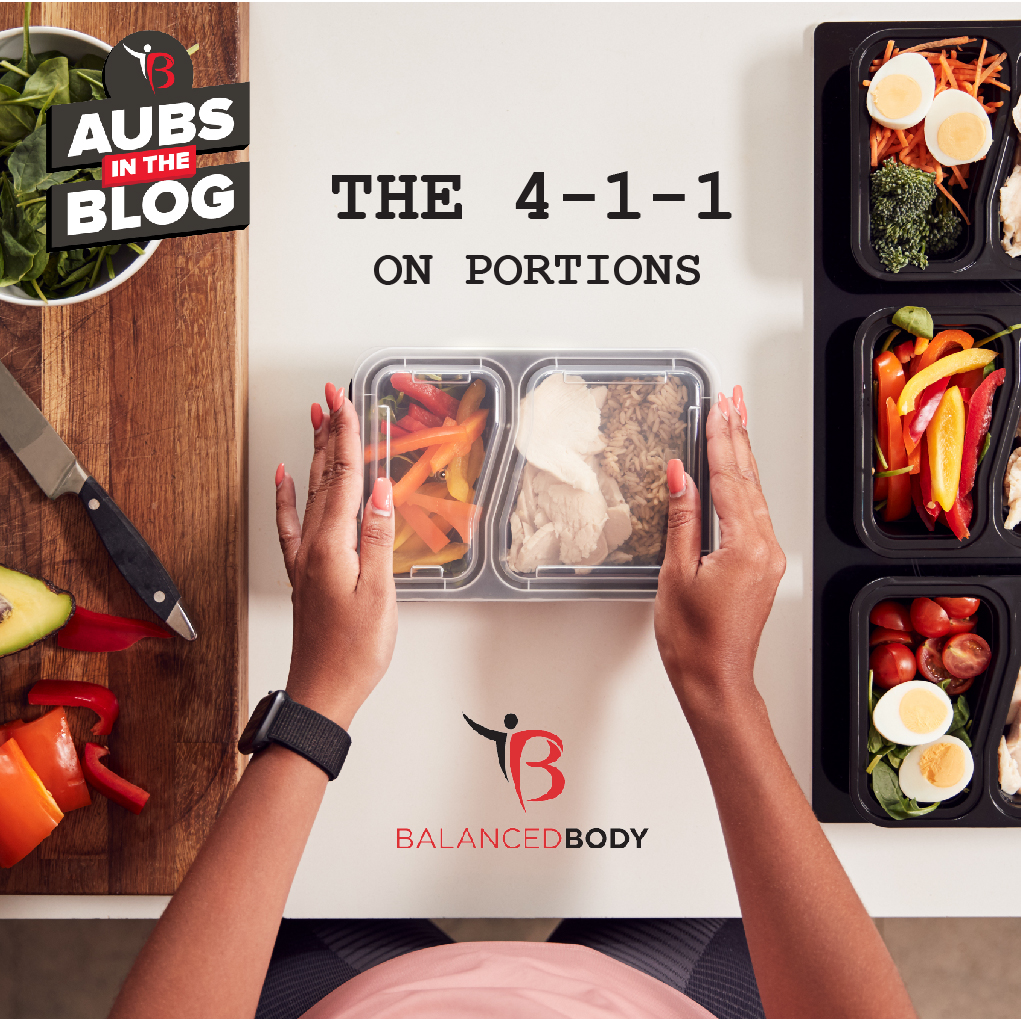Did you know that the average portion size of a North American restaurant meal has grown SO MUCH over the past decade that a single plate serving is a piled with enough food for two to three people? Research studies have further examined portion sizes and the impact on obesity, revealing an increased availability of larger food portions ranging from two to five times larger than their original state
If you want to avoid overconsumption and portion sabotage, you should shift your focus to getting educated on what your body’s needs are and practice making a few simple habit changes.
Why Portions Really Matter
Portion size represents the amount of food on the plate, and requires a certain level of self-awareness to know how much you should or should not be eating. When portion sizes are excessive, we place ourselves at risk for weight gain and weight-related disease. Portions help us recognize “is this too much or too little?”. This makes understanding what our body needs to function at an optimal level, very important. In addition, proper portions help us avoid excessive hunger and unhealthy eating patterns.
Invest & Know Your Available Resources
Over the course of my nutrition coaching career, I have watched dozens of clients go from failure to success in their nutrition and health goals based on the same factor. Education. More times than not, clients come to me with little to no knowledge about what their body needs. I’ve received so many questions ranging from food sources, meal timing, carbs-fats-proteins, good vs. bad choices, and of course, how much they should be eating. Undersconsumption is equally as much a trend as overconsumption, both of which correlate to portion sizes.
Education and available resources can include:
- Nutrition coaching
- Nutrition programs
- Meal prep services
- In-person courses
- Online courses
- Cooking class
- Health & Wellness events
- Reading (books/journals)
Allow Yourself Portion Balance
Portions don’t need to be restrictive, in fact, I encourage you to allow yourself some balance. Yes, it is important to meet your daily fruits and veggies, healthy carb sources, poultry, and dairy – – – but don’t eliminate what you enjoy. This relationship is simple…meet your daily needs, but give yourself a little wiggle room for something you enjoy having too. Just remember to hit your portions on everything, including the chocolate cake! This balance will help prevent cravings, binges, crashes, and stress-related to food and eating.
Practice Easy Habits
The key to making anything work long-term is finding ways to make it work for you. Easy habits that are lifestyle friendly are the easiest and fastest to learn! Here are some of my favorites:
- Eating out: Just ask for a to-go box and take half of your meal home
- Fear of overeating: drink an 8-12 oz glass of water before sitting down at the table
- Shrink your plate: use your larger plates for salad and smaller plates for meals
- Eyeball technique: click HERE for access to an awesome conversion chart
- Plating your food: ½ veggies or salad, ⅔ protein, ⅓ carbs
- Know your choices: opt for lean proteins, healthy fats, and whole grains
Are you having trouble with nutrition, portion control, weight loss, or achieving your general health and wellness goals? Please contact me today to learn more about our customized nutrition program, Balanced Habits.
Aubree “Aubs” Shofner
Certified Nutrition Professional
Balanced Habits, Coach & Creator
[email protected]
